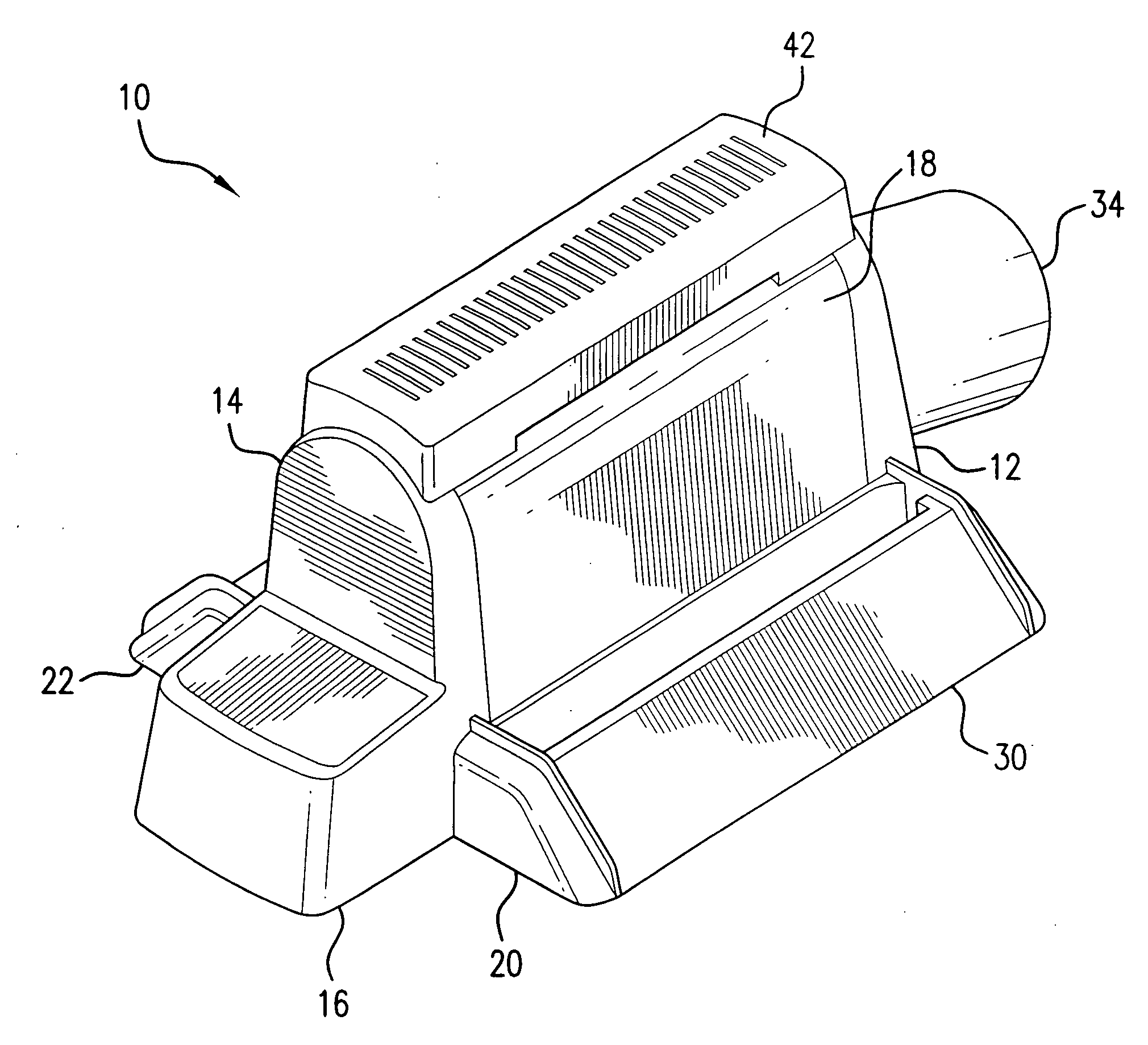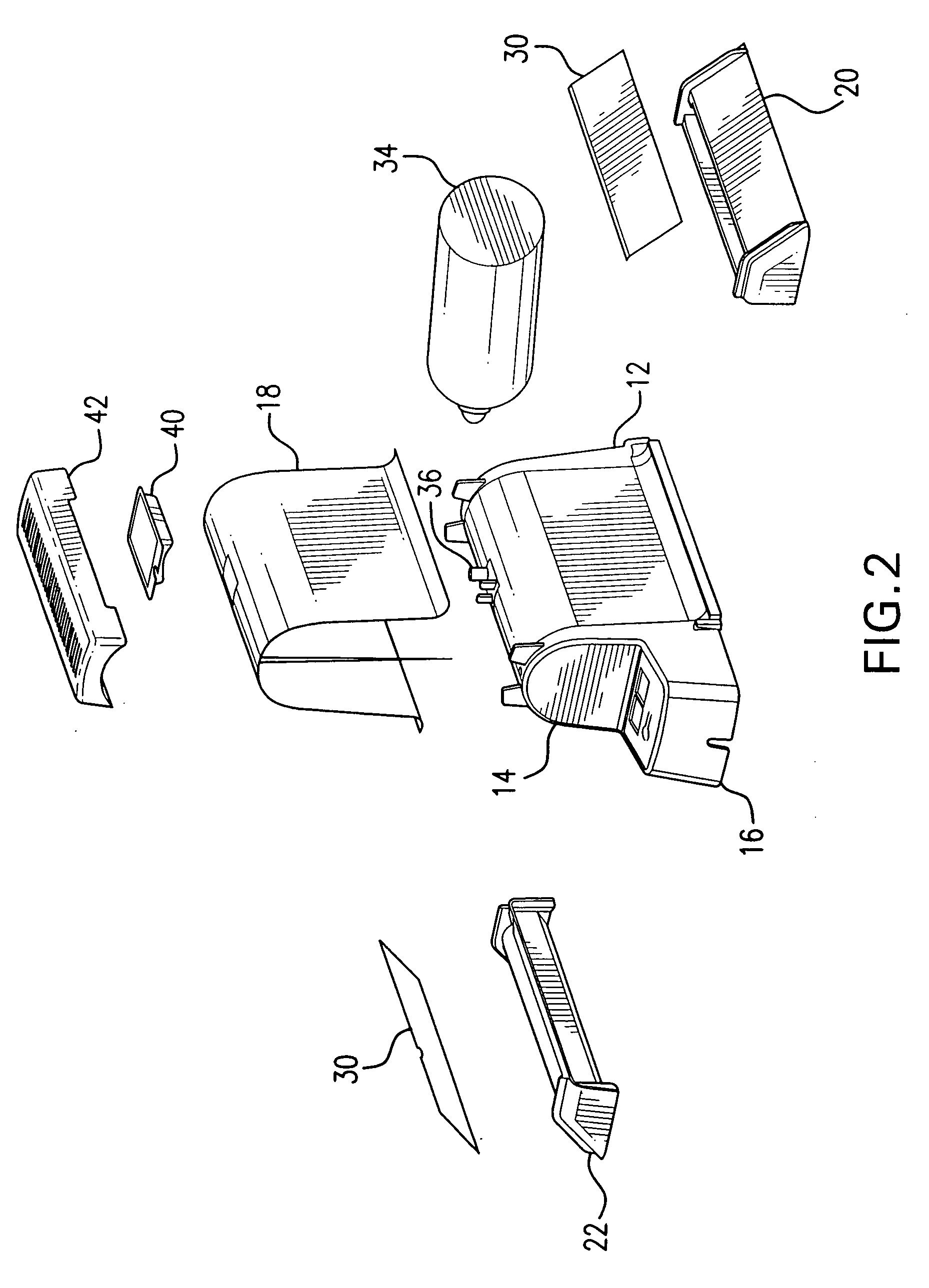Methods, apparatus and compositions for abatement of bed bugs
a technology of bed bugs and compositions, applied in the field of bed bug abatement methods and compositions, can solve the problems of high cost of treatment, no fully effective treatment is now in use, and the gel-based insecticides primarily used today do not have any effect on bedbugs, so as to achieve the effect of destroying the infestation
- Summary
- Abstract
- Description
- Claims
- Application Information
AI Technical Summary
Benefits of technology
Problems solved by technology
Method used
Image
Examples
example 1
Effectiveness of Bed Bug Lures on Attracting Bed Bugs (Lure and Heat)
[0044]A one-bedroom apartment containing about 1,000 to 2,000 bed bugs was used for this example. Three of the apparatus described above were placed in the bedroom (one on each side of the bed and another at the foot of the bed). Each of the apparatuses contained either (1) no chemical attractant, (2) octenol as a chemical attractant; or (3) octenol and lactic acid as a chemical attractant. None of the devices included carbon dioxide as an attractant. The apparatuses were operated from 12 AM to 6 AM for 1-12 days. The trap locations were rotated after periodic checks. The number of bed bugs trapped was determined each day. The results are shown in FIG. 4.
[0045]As shown in FIG. 4, the number of cumulative trap catches increases over time. An apparatus using heat plus a combination of octenol and lactic acid chemical attractants shows the largest amount of insect catches over the analyzed time period.
example 2
Effectiveness of Bed Bug Lures on Attracting Bed Bugs (Lure and Heat)
[0046]A one-bedroom apartment containing more than 1,000 bed bugs was used for this example. Apparatuses described as in Example 1 were prepared as follows:
ApparatusAttractants1Control (no heat or chemicals)2Heat alone3Heat plus octenol4Heat plus octenol plus lactic acid5Heat plus octenol plus lactic acidplus propionic acid plus butyricacid plus valeric acid.
[0047]A control apparatus and one of apparatus 2, 3, 4, or 5 was installed in the bedroom on opposite sides of the bed. No carbon dioxide was used as an attractant in this example. The apparatuses were operated from 12 AM to 5 AM for 2 days. The trap locations were rotated after periodic checks. The number of bed bugs trapped was determined each day. The results are shown in FIG. 5.
[0048]As shown in FIG. 5, the mean trap count for each of the experimental apparatuses shows significantly larger number of trapped bedbugs as compared to the control.
example 3
Effectiveness of Bed Bug Lures on Attracting Bed Bugs (Lure, Heat, and Carbon Dioxide)
[0049]Conditions similar to Example 1 were used for this Example, but carbon dioxide was also included as an attractant. Following the experiments, counts of adult and juvenile bed bugs were determined. The results are shown in FIGS. 6 and 7.
[0050]As shown in FIG. 6, a combination of heat, chemical attractant, and carbon dioxide was significantly more effective in trapping bedbugs than was heat and carbon dioxide alone. As shown in FIG. 7, using a combination of heat, chemical attractant and carbon dioxide, the number of trapped bed bugs was reduced significantly over the first four days of the experiment. The following days show many fewer traps, suggesting that the entire bedbug population in the structure was significantly decreased.
PUM
 Login to View More
Login to View More Abstract
Description
Claims
Application Information
 Login to View More
Login to View More - R&D
- Intellectual Property
- Life Sciences
- Materials
- Tech Scout
- Unparalleled Data Quality
- Higher Quality Content
- 60% Fewer Hallucinations
Browse by: Latest US Patents, China's latest patents, Technical Efficacy Thesaurus, Application Domain, Technology Topic, Popular Technical Reports.
© 2025 PatSnap. All rights reserved.Legal|Privacy policy|Modern Slavery Act Transparency Statement|Sitemap|About US| Contact US: help@patsnap.com



